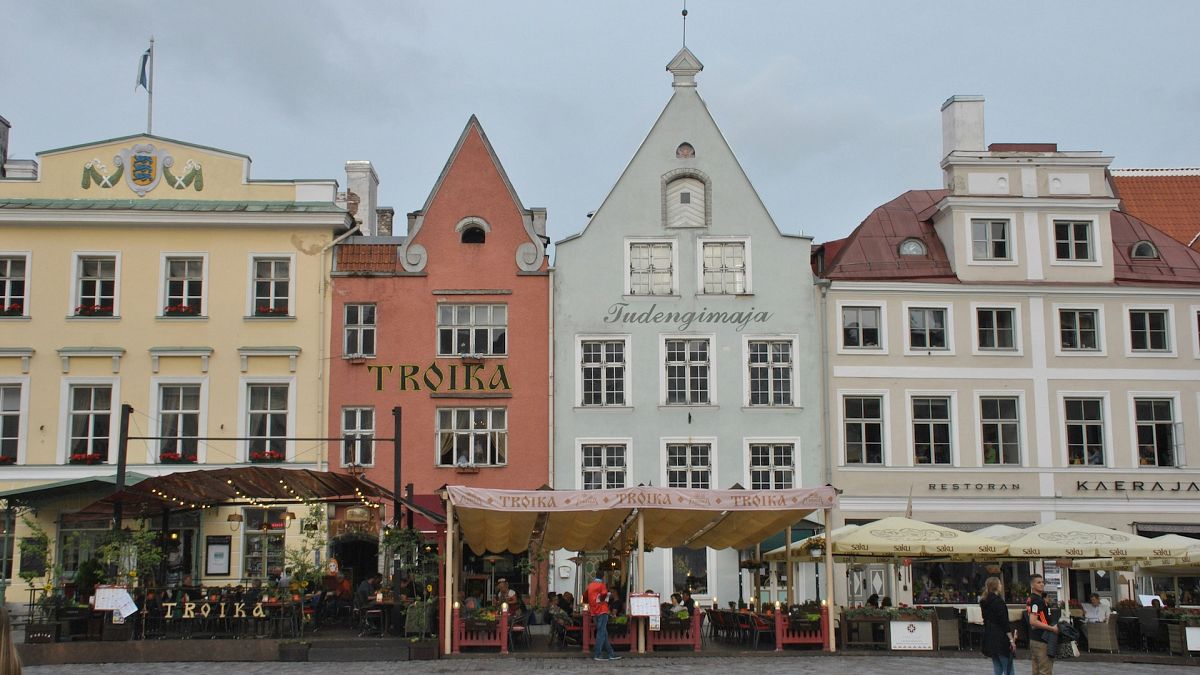How much income goes on rent for minimum wage earners in Europe?

The share of minimum wage income spent on rent varies across Europe, from 35% in France to 56% in the Netherlands. Euronews Business examines minimum wages and average rent costs in EU countries.
"Housing, water, electricity, and gas" constituted the largest portion of household expenditures in the EU. In 2022, nearly a quarter of all household spending (24.1%) was allocated to these essential needs, clearly showing the substantial weight they carry in European household budgets.
This proportion varies significantly across European countries and, more importantly, according to income levels within each country. Minimum wage earners, in particular, are heavily impacted, as they allocate a larger share of their income to "housing, water, electricity, and gas".
The European Trade Union Confederation (ETUC) reports that, in 14 EU member states, rent for a property with a maximum of two bedrooms takes up at least 35% of the income of workers on the statutory minimum wage. In 2024, on average, these workers spend 45% of their earnings on housing alone, illustrating the heavy financial burden that housing costs place on low-wage earners across these countries.
"Millions of working people in most member states see a huge part of their wages leave their bank accounts as soon as it’s come in simply to keep a roof above their heads," ETUC General Secretary Esther Lynch said.
How much does it cost to rent a property with up to two bedrooms in various European countries? What is the monthly salary of minimum-wage earners across Europe? And which countries see the highest proportion of income spent on rent by those earning the minimum wage?
Minimum wage varies widely, from €477 to €2,571
Among the 14 countries included in the research, statutory minimum wages ranged from €477 in Bulgaria to €2,571 in Luxembourg. Only six of these countries have a minimum wage above €1,000, with three exceeding €2,000: Luxembourg, Ireland, and the Netherlands.
Denmark, Italy, Austria, Finland, and Sweden do not have a national statutory minimum wage.
Average rent across 14 countries is €600
The rent for a property with a maximum of two bedrooms ranged from €215 in Bulgaria to €1,340 in Luxembourg, while the average of 14 countries is €599.
In seven countries, the average rent was below €400, including Bulgaria (€215), Romania (€277), Croatia (€311), Greece (€344), Slovakia (€371), Estonia (€387), and Portugal (€391). On the higher end, average rent exceeded €1,000 in Luxembourg, Ireland, and the Netherlands, while it was €618 in France and €578 in Spain.
Rent calculations are based on Eurostat's 2022 data, adjusted for inflation.
Portion of minimum wage spent on rent
The portion of minimum wage income spent on rent offers valuable insights into the financial burden rent places on low-wage earners. Among the 14 countries, this proportion ranged from 35% in France to 56% in the Netherlands. On average, minimum-wage earners across these countries spend 45% or 46% of their income on rent, depending on the calculation method used.
In addition to the Netherlands, where the proportion reaches 56%, rent consumes over 50% of minimum wage income in both Ireland (55%) and Luxembourg (52%).
France has the lowest proportion at 35%, meaning rent accounts for roughly a third of minimum-wage workers' income. Croatia (37%) and Greece (38%) follow closely behind France in having lower rent-to-income ratios for minimum wage earners.
In Bulgaria, where both minimum wages and rent are the lowest, workers still spend a significant 45% of their income on rent. In Spain, this proportion is similarly high at 44%.
The cost of rent is based on national averages; however, the situation can be even more challenging in cities and capital areas, where most jobs are concentrated.
"Despite paying high rents with low wages, their accommodation is often totally inadequate, exposing them and their families to health conditions," said Esther Lynch.
"Others are forced to sleep on the couch in their friends' apartments, continue living with their parents when possible, and even sleep in their cars," she added.
How much do European countries spend on housing and bills?
We can also examine additional data from Eurostat that goes beyond minimum wage and rent alone. This dataset reflects the percentage of total household expenditure allocated to housing, water, electricity, gas, and other fuels, which varies significantly across Europe.
In 2022, Slovakia topped the list, with over 30% of household expenditure allocated to housing, water, electricity, gas, and other fuels. Finland and Denmark followed closely, with households spending 29.6% and 29.1%, respectively, on housing and utilities.
In contrast, Malta (13.9%) and Croatia (14.9%) allocate a much smaller share of their expenses to housing and utilities.
The chart highlights that Northern and Central European countries face substantial financial pressures related to these costs.
This expenditure includes:
Actual rentals for housing
Imputed rentals for housing
Maintenance and repair of the dwelling
Water supply and miscellaneous services relating to the dwelling
Electricity, gas and other fuels
In 2019, this proportion was 25.7% in the UK, a former EU member.
No comments:
Post a Comment